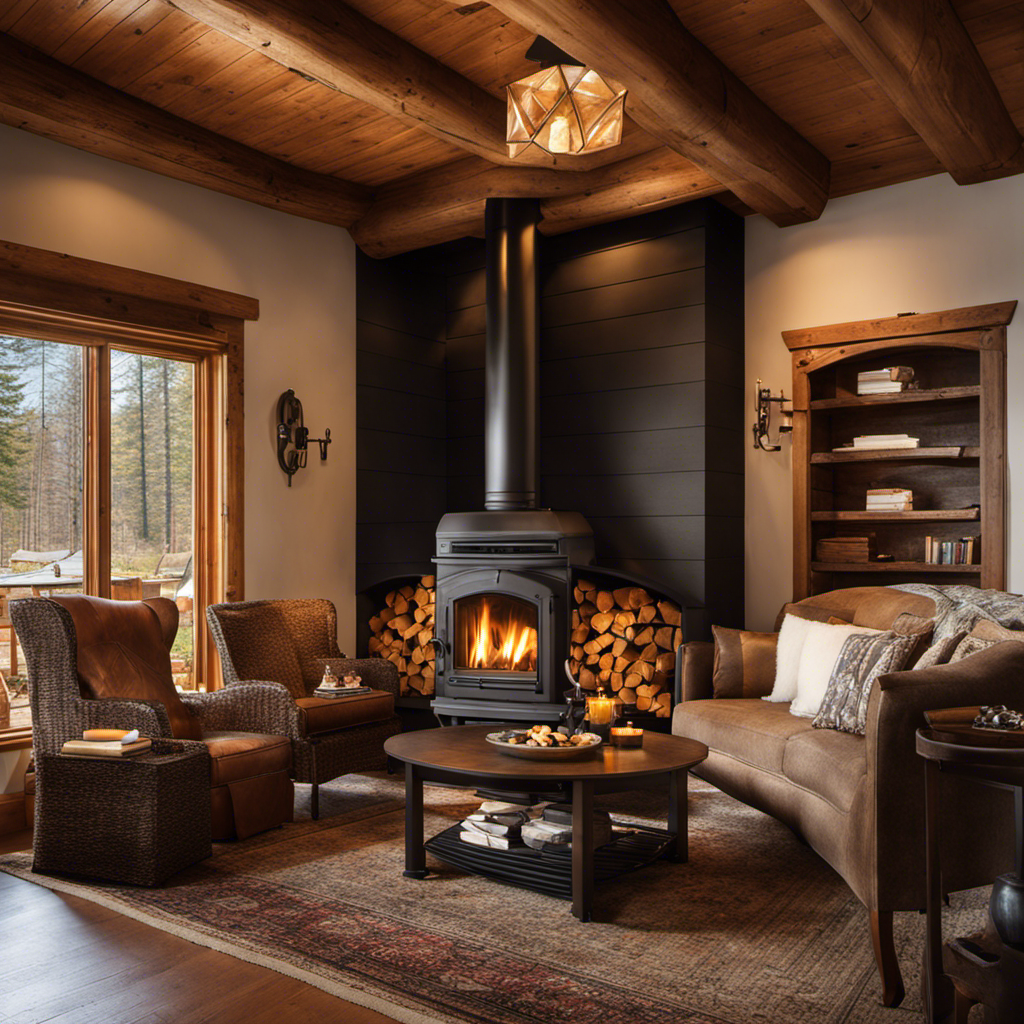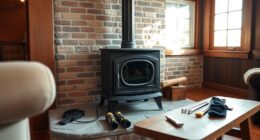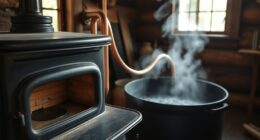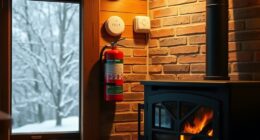Being someone who has a lot of experience owning a wood stove, I have learned the significance of regularly maintaining and replacing fire bricks.
These sturdy blocks protect the interior of your wood stove from the intense heat generated by burning wood.
In this article, I’ll guide you through the step-by-step process of replacing fire bricks, ensuring your wood stove remains efficient and safe.
So grab your tools and let’s get started on this vital maintenance task for your beloved wood stove.
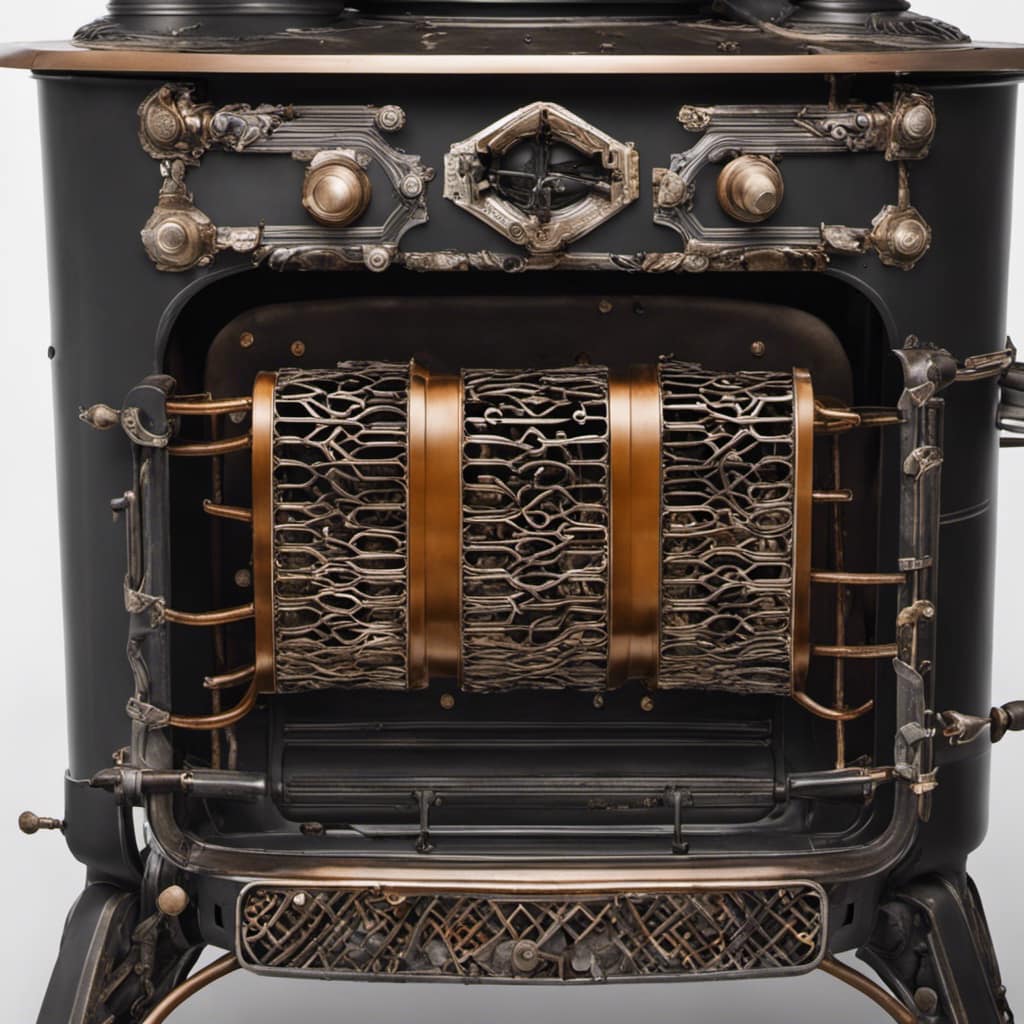
Key Takeaways
- Cracks, chips, or crumbling edges indicate damage and potential need for replacement.
- Discoloration may suggest excessive heat exposure or improper usage.
- Even small cracks can compromise the efficiency and safety of the wood stove.
- Proper maintenance, including regular cleaning of the flue and chimney, is important to prevent blockages and maintain optimal heat efficiency.
Assessing the Condition of Your Fire Bricks
I’m checking the condition of my fire bricks to see if they need replacing.
When it comes to evaluating durability, it’s crucial to assess signs of wear and tear. Fire bricks are designed to withstand extreme heat and protect the stove’s interior.
As I examine each brick, I look for any cracks, chips, or crumbling edges. These are clear indications of damage and a potential need for replacement. Additionally, I inspect the bricks for any discoloration, as this may suggest excessive heat exposure or improper usage.
It’s important to note that even small cracks can compromise the efficiency and safety of the wood stove.
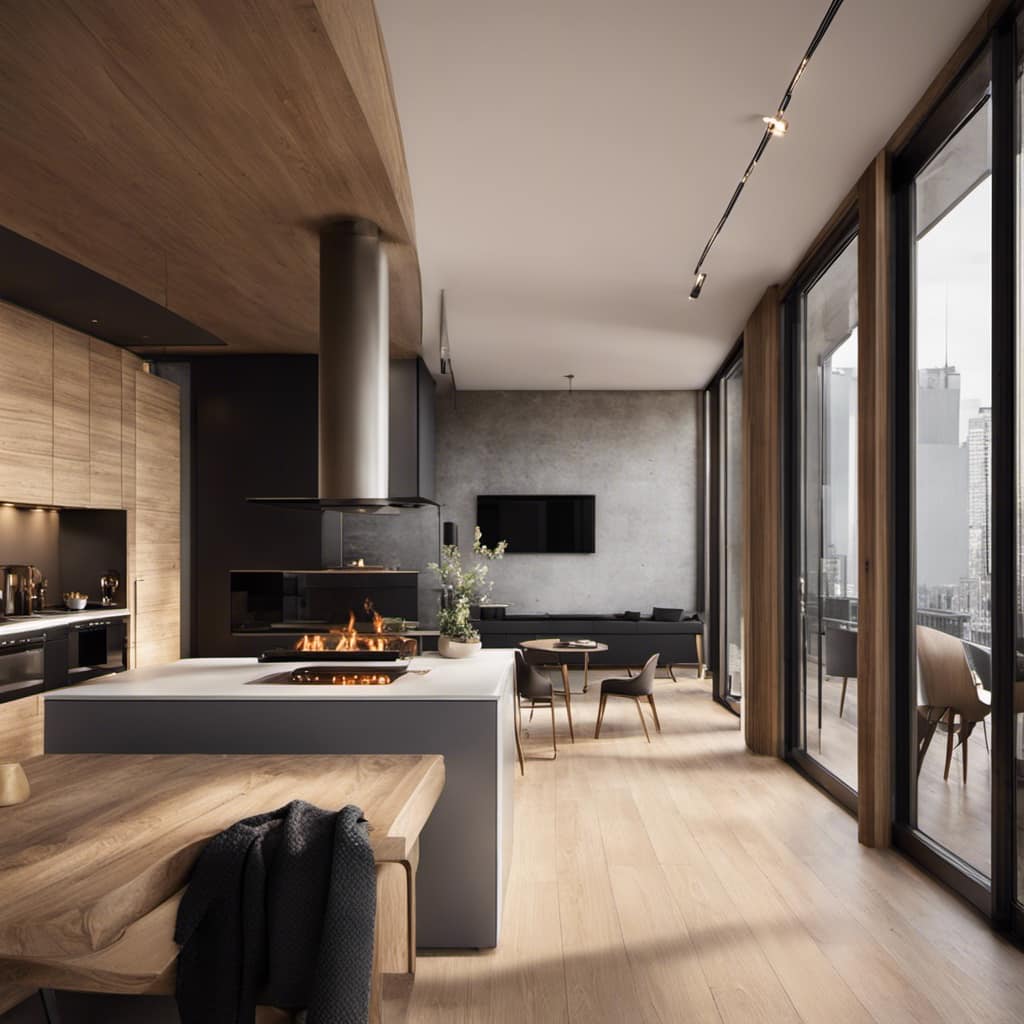
Gathering the Necessary Tools and Materials
I have gathered all the necessary tools and materials needed for replacing the fire bricks in my wood stove. As a technical enthusiast, I understand the importance of choosing the right type of fire brick for this task. It’s crucial to select a fire brick that can withstand high temperatures and provide excellent insulation. Here are some key points to consider when choosing the right fire brick:
- Density: Opt for a fire brick with high density to ensure durability and resistance to cracking under extreme heat.
- Thermal conductivity: Look for bricks with low thermal conductivity to minimize heat loss and maximize energy efficiency.
- Size and shape: Ensure the bricks fit snugly into the stove, preventing any gaps that could compromise the stove’s efficiency.
Safety precautions while replacing fire bricks are of utmost importance. Here are some essential steps to follow:
- Turn off and cool down the stove before starting the replacement process.
- Wear protective gloves and safety glasses to protect yourself from injuries.
- Use a suitable tool, like a chisel or pry bar, to remove the old bricks carefully.
- Clean the area thoroughly to remove any debris or ash before installing the new bricks.
- Follow the manufacturer’s instructions when placing the new bricks, ensuring a secure fit.
Removing the Old Fire Bricks
It’s important to carefully remove the old fire bricks to avoid damaging the surrounding areas of the wood stove. Before starting this process, make sure to wear protective gloves and safety goggles to prevent any injuries.
Begin by cleaning the area around the fire bricks, removing any debris or ash. Next, using a chisel and hammer, gently tap on the edges of the fire bricks to loosen them. Slowly lift each brick out, being cautious not to disturb any other components of the stove.
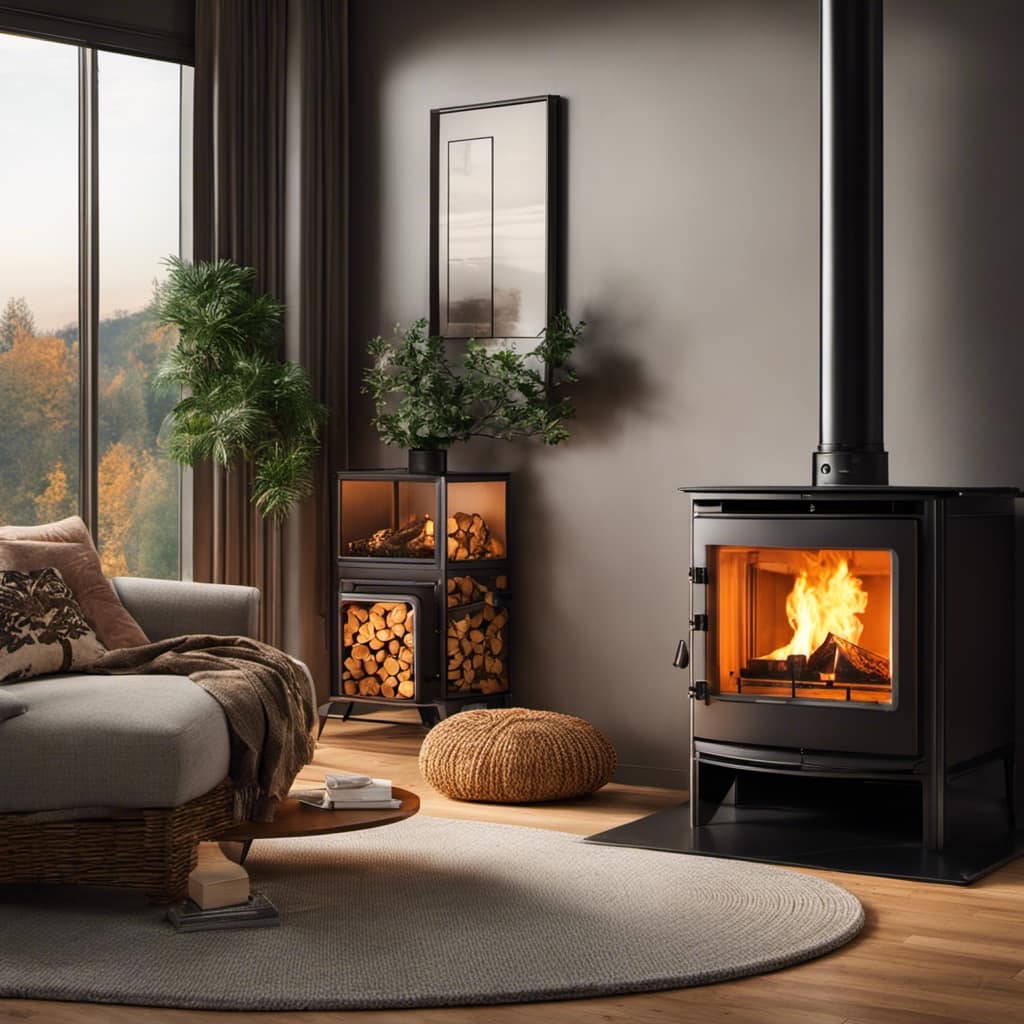
Once all the old bricks have been removed, inspect the area for any damage or cracks. Clean the surface thoroughly before proceeding to the next step.
Installing the New Fire Bricks
Where should I position the new fire bricks for optimal heat distribution?
When replacing fire bricks in a wood stove, proper insulation is crucial for efficient heat retention. To achieve optimal heat distribution, follow these guidelines:
Place the fire bricks along the walls and floor of the firebox, ensuring a tight fit to prevent heat loss.
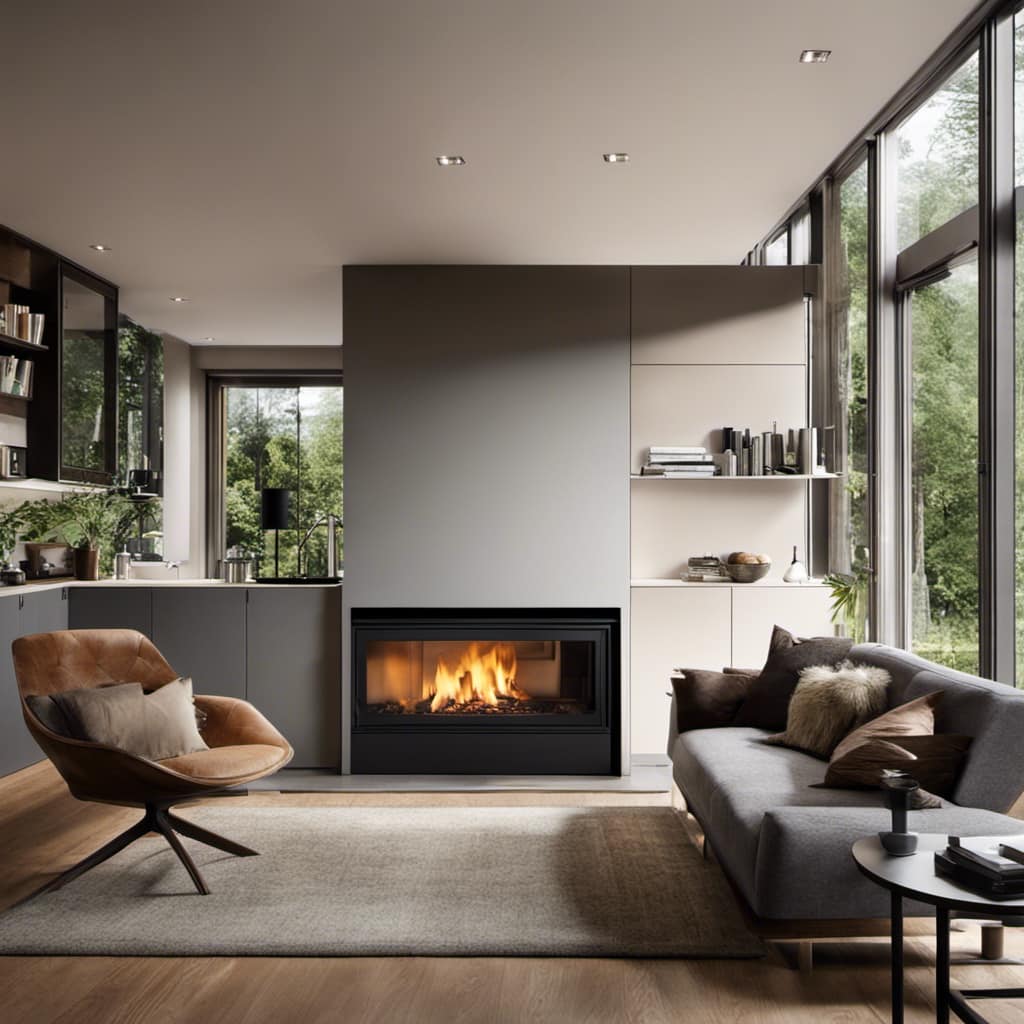
Arrange the bricks in a staggered pattern, overlapping the joints to minimize gaps and improve insulation.
Consider using a high-density fire brick alternative, such as refractory cement or cast iron, which offer better heat retention and longevity.
Proper Maintenance and Care for Your Wood Stove
To keep your wood stove functioning efficiently, regularly cleaning the flue and chimney is essential for preventing blockages and ensuring proper ventilation. The importance of regular chimney cleaning can’t be overstated. Over time, creosote, a highly flammable substance, can build up in the chimney, increasing the risk of chimney fires. Additionally, blockages caused by debris or bird nests can restrict airflow and reduce the stove’s heat efficiency.
To maximize heat efficiency in a wood stove, consider these tips. First, use properly seasoned firewood to minimize smoke and maximize heat output. Second, adjust the damper to control the amount of air entering the stove, ensuring a steady and efficient burn. Finally, regularly clean the stove’s interior, removing ash and debris that can hinder airflow.
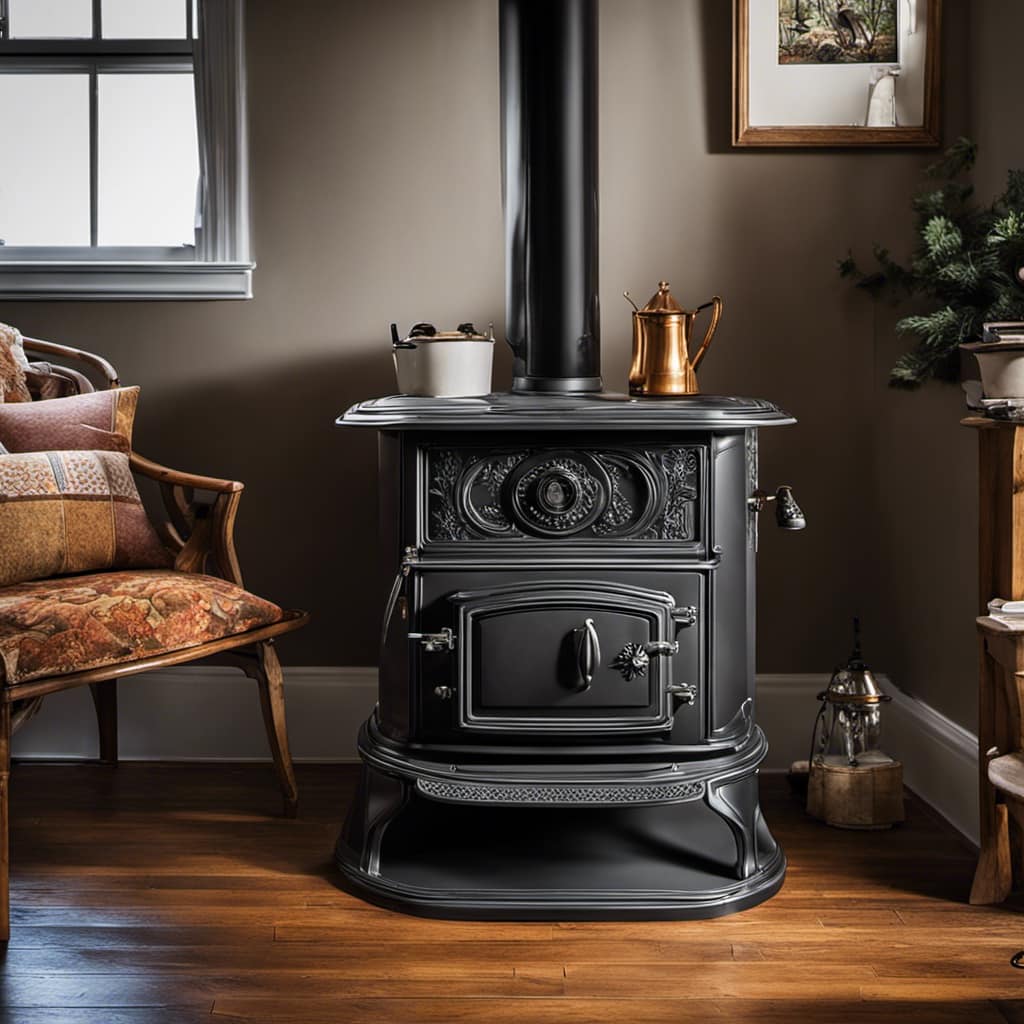
Do I Need to Replace the Bricks in My Wood Stove and How?
The importance of stove bricks in your wood stove cannot be overstated. Over time, bricks can become cracked or damaged, affecting the efficiency of your stove. It is crucial to regularly check for any signs of wear and tear and replace the bricks as needed to maintain optimal performance.
Frequently Asked Questions
How Do I Know if My Wood Stove’s Fire Bricks Need to Be Replaced?
To determine if fire bricks in a wood stove need replacing, look for signs of damage such as cracks or crumbling. If replacement is necessary, follow proper installation instructions to ensure the stove’s efficiency and safety.
Can I Use Regular Bricks Instead of Fire Bricks in My Wood Stove?
Regular bricks are not recommended as an alternative material for fire bricks in a wood stove. Fire bricks are specifically designed to withstand high temperatures and prevent heat transfer. Using regular bricks can lead to safety hazards and inefficient heating.
Is It Necessary to Wear Protective Gear While Replacing Fire Bricks in a Wood Stove?
It is absolutely essential to wear protective gear when working on a wood stove. Neglecting proper ventilation and neglecting to wear protective gear can lead to serious injury or even death. Safety first!
How Often Should I Replace the Fire Bricks in My Wood Stove?
I should replace the fire bricks in my wood stove every few years to ensure optimal performance. Regular chimney cleaning is also important. Fire bricks provide insulation and protect the stove from damage.
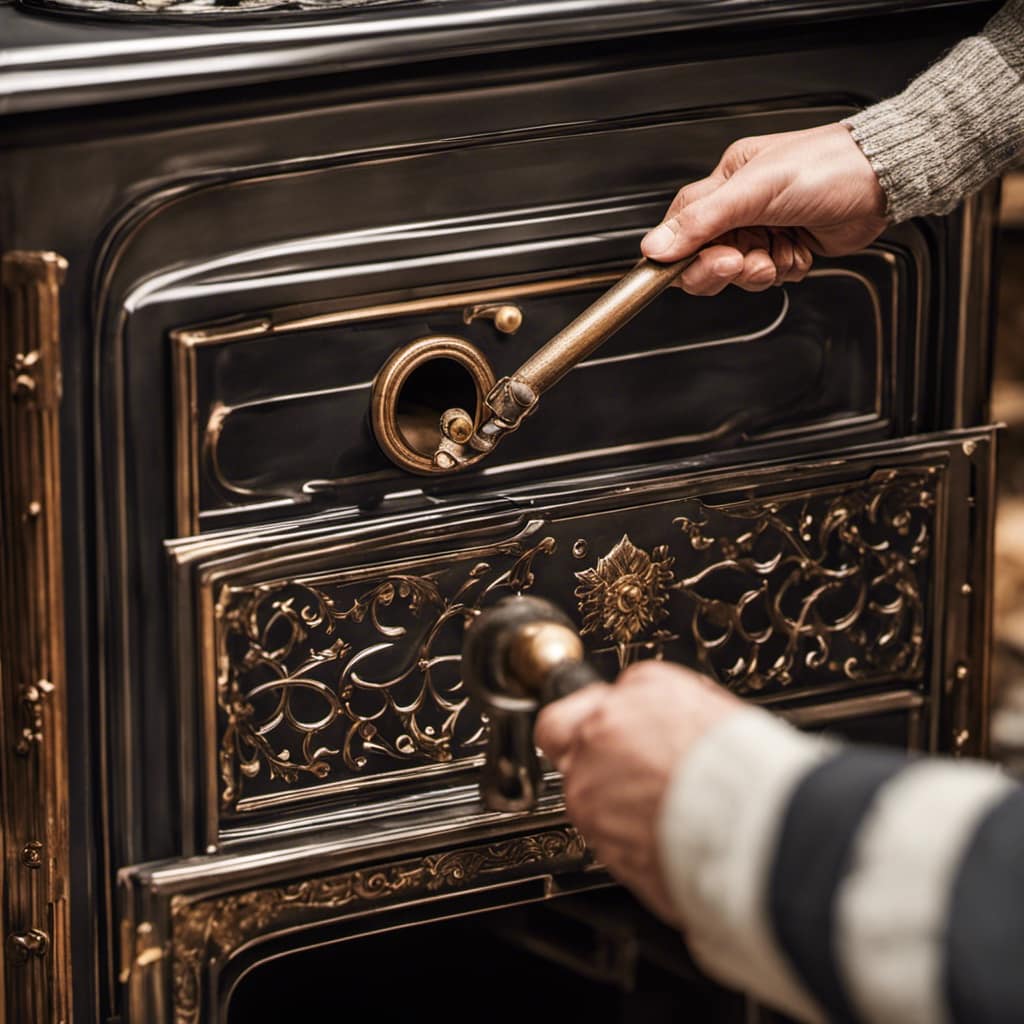
Are There Any Specific Safety Precautions I Should Take When Replacing Fire Bricks in a Wood Stove?
When handling fire bricks, it is crucial to prioritize safety precautions. Protect yourself by wearing gloves and goggles, as broken bricks can be sharp and emit harmful dust. Safety first, always!
Conclusion
In conclusion, by following the steps outlined in this article, you can easily replace the fire bricks in your wood stove.
With the right tools and materials, removing the old bricks and installing the new ones becomes a straightforward process.
Remember to properly maintain and care for your wood stove to ensure its longevity and efficient performance.
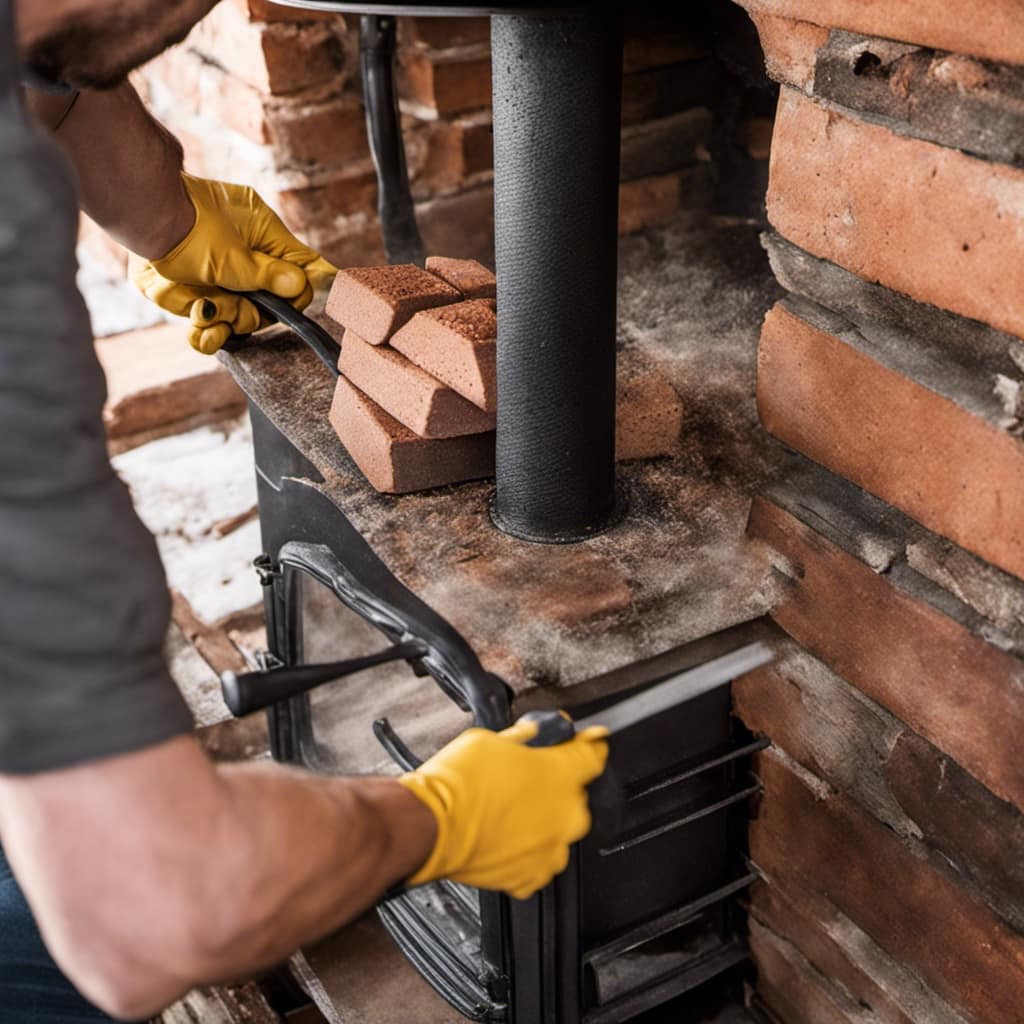
So, don’t wait any longer – get ready to enjoy a well-functioning wood stove that will keep you warm and cozy for years to come.
Growing up surrounded by the vast beauty of nature, Sierra was always drawn to the call of the wild. While others sought the comfort of the familiar, she ventured out, embracing the unpredictable and finding stories in the heartbeat of nature.
At the epicenter of every remarkable venture lies a dynamic team—a fusion of diverse talents, visions, and passions. The essence of Best Small Wood Stoves is crafted and refined by such a trio: Sierra, Logan, and Terra. Their collective expertise has transformed the platform into a leading authority on small wood stoves, radiating warmth and knowledge in equal measure.







